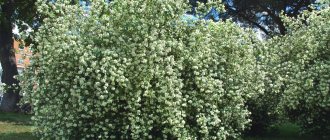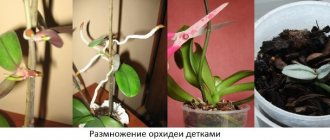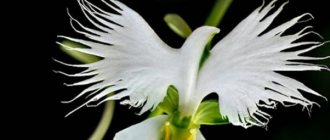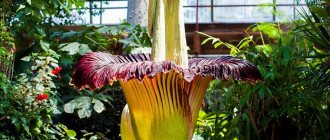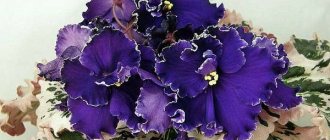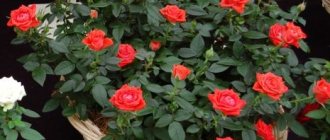Previously known to everyone exclusively as a wildflower, cornflower subsequently took on a cultivated form and settled in many flower beds as an ornamental plant. And its various varieties today boast more than just shades of blue.
Garden cornflowers have one difference visible to the naked eye from meadow plants of this species: they are decorative and are distinguished by larger flowers. And most importantly: the rich blue shade of the buds, which is familiar to us, has been replaced by a variety of colors of cultivated species and varieties. By the way, among the inhabitants of flower beds there are also cornflowers, which are radically different from the original even in the appearance of the flowers: they are denser and fluffier, and we will also tell you about them.
There are two versions of the origin of the word centaurea - the Latin name of the plant. One of them, mythological, claims that with the help of cornflower the centaur Chiron was healed from the poison of the Lernaean Hydra. Another says that this flower was called that way even under Hippocrates, and translated from Greek its name literally sounds like “stabbing bulls.”
Classic Fantastic
An annual or biennial flower in cool blue shades, from light sky and blue to dark blue, as well as two-tone blue and white. Grows up to 100 cm in height and up to 30 cm in width. Unpretentious to grow. Looks especially good in borders and as part of a Moorish lawn. Flowering is abundant and long lasting - from June until frost.
- Low-growing plants for hedges and borders
Emphasize the beauty of the landscape with a low hedge up to 1 m high.
Cornflower petals of some varieties (for example, Classic Fantastic) are used in cooking - added to salads, sprinkled on omelette or pasta.
Planting and propagation
Cornflowers in their natural environment reproduce well by self-sowing. But for a decorative flower bed, the seedling method is better suited. By the end of March, plant the seeds in moist soil, lightly sprinkle with soil and leave warm under film until germination.
After sprouting, remove the film and move the containers to the light. When 2 leaves appear, thin the seedlings, leave the strongest ones, and pinch the rest at ground level. They can be transplanted into the garden when they grow to 10 cm.
Seeds can be sown immediately in open ground, but not earlier than the beginning of May, when the threat of frost has passed. Shoots will appear in a couple of weeks. And perennial varieties can be planted with seeds before winter, when the ground is already a little frozen.
At the end of summer, cornflowers can be propagated by dividing the bush. The mother plant must be carefully dug up, washed, cut off all excess shoots and separate the healthy part with at least three buds. After this, the cornflowers need to be planted, trimmed to 10 cm and watered regularly.
Photo: ugra-news.ru
John Coutts
Large pink or purple flower with a white center. Capable of growing up to 50 cm in height and width. The plant is rich in pollen, so it performs an additional function by attracting living helpers - bees - to your site. Perennial, frost hardy, ideal for mixed herbaceous borders, gardens or containers where it will bloom continuously from June to September.
- DIY container garden - 6 tips for creating and maintaining
A landscape designer from Belarus shares his personal experience in creating an unusual container garden.
It is best to grow this cornflower in well-drained soil in a sunny or partial shade location. And if you regularly remove wilted leaves and stalks, you can sometimes prolong its flowering. By the way, this is also true for some other varieties of cornflowers. Does not have toxic effects on people and animals.
Cornflowers in the garden
How to place cornflowers in your garden?
They are good in separate small groups and in a mixborder with other perennial flowers that do not pretend to be particularly chic: daisies, aquilegia, rudbeckia, speedwell, catnip. Flower mix with cornflowers If there are slopes on the site, cornflowers will be an excellent way to protect the soil from erosion and at the same time decorate the slope. Low-growing and creeping species fit perfectly in rock gardens and rocky gardens. For a beginning gardener, these are one of the most favorable plants, since there are no difficulties in growing them. Grow blue, yellow and purple cornflowers in your garden - unassuming and so cute.
Other publications on our site that may interest you:
- Amazing flower - annual cornflower “Compliment”
- Health recipes: blue cornflower for good vision
- Simple, cute flowers...
Amethyst in Snow (Amethyst in Snow, Amethyst in the snow)
The Amethyst in the Snow cornflower is a bicolor flower with silky white tube-shaped petals that emerge outward from a sharp purple center. It can grow up to 50 cm and in width up to 1 m.
This cornflower gets its interesting name because its core is actually similar in color to the amethyst gemstone. And the white petals surrounding it resemble snow. Literally translated into Russian, the name Amethyst In Snow means amethyst in the snow. The plants form dense masses, which makes it an integral part of any flower garden - edging, mixborder, front garden or rock garden.
For best flowering, this cornflower is grown in an open sunny area in neutral or alkaline soil with good drainage. The plant requires division every 2-3 years. Its flowering occurs at the end of spring - beginning of summer. This means that it is advisable to plant nearby plants that bloom throughout the season or arrange a flowerbed of continuous flowering.
- How to beautifully decorate a flowerbed of continuous flowering with your own hands
Popular flowers for flower beds that bloom all summer, photos for inspiration, as well as colorful diagrams and useful recommendations!
Pests and diseases of cornflowers
Cornflowers rarely get sick and are almost not afraid of pests. They have only two main problems - fungus and mites. The most common fungal disease is fusarium, which quickly deteriorates the leaves. It is necessary to remove all affected areas, disinfect the cuts and treat the planting with fungicides.
Spider mites multiply intensively in hot and dry weather. The leaves turn yellow, and the plants are completely covered with a whitish coating called cobwebs. Special insecticides or spraying with an ordinary soap solution help against ticks.
Photo: oir.mobi
Daisies (50 photos): types, planting and care in open ground
Bride (Bride)
An unpretentious annual with large fragrant white flowers. This stunning snow-white cornflower is ideal for cutting. Its height is 60-100 cm, and the diameter of the flower is about 30 cm. In the strict sense of the word, it is not even very similar to the traditional cornflower. And only the characteristic structure of the flower indicates that it clearly belongs to the Asteraceae family.
The tubular flowers are very elegant due to the deeply cut edges of the corolla. An ideal “candidate” for a place of honor in any bouquet, it will, however, be able to decorate any flower bed on your site, especially since it blooms from May to July.
- What types of flower beds are there?
What is the difference between a flowerbed and a front garden, and a rockery from an alpine hill?
To increase the splendor of the plant, it is necessary to periodically pinch it.
general information
Cornflowers are found throughout Europe, decorating lawns and flower beds in gardens and cities. They also grow in the wild, where our distant ancestors noticed it and began to use it as a medicinal plant.
The bright flowers of cornflower are large inflorescences-baskets of individual small flowers that look like petals. In addition to blue and dark blue varieties, there are white, pink, yellow and burgundy varieties.
Cornflower is a herbaceous plant, but it is not always small, because some species can grow over a meter. Among them there are annuals and perennials, and in natural conditions they grow almost like weeds.
Basically, the stems of cornflowers are erect or recumbent, and the leaves can be whole or heavily dissected. The inflorescences are collected in several pieces, due to which wonderful bouquets are obtained from cornflowers. Otherwise, it is quite problematic to derive a single general description due to the diversity of the genus.
Photo: phonoteka.org
Frosty
A multi-colored, unpretentious annual up to 80 cm high. Delicate double flowers are collected in inflorescences shaped like baskets. Frost-resistant, prefers sunny places and well-drained soil with a neutral acidity level. The plant is drought resistant.
Frosty's cornflower gets its name from its white border, which, when viewed from a distance, gives it the appearance of a frost-covered flower.
Looks great either cut as part of a bouquet or in any flower bed. Blooms from June to September.
Bouquets of cornflowers
Since ancient times, beautiful legends and songs have been written about these wildflowers. In Rus', the first harvested sheaf of the new harvest was certainly decorated with cornflowers and placed in the most prominent place in the hut. Blue flowers among the ears, according to one legend, are a symbol of the love of heaven for earth. Therefore, artists often depict bouquets of cornflowers along with golden spikelets in their paintings. Such floral arrangements also look original in the decor of wedding halls.
In the photo: Wreath of cornflowers
In Japan, these wildflowers are considered a symbol of love and fidelity, and in Europe they are associated with simplicity, trust and sincerity. It is not surprising that bright blue cornflowers are most often used in luxurious wedding bouquets, emphasizing the modesty and femininity of the bride.
In the photo: Spikelets, cornflowers, poppies and daisies
These flowers easily combine with both their exquisite floral “neighbors” (white roses and blue irises) and their wild counterparts (poppies and daisies). A wedding bouquet of cornflowers in combination with daisies will better than others emphasize the dreamy and romantic nature and serve as a reflection of the most tender and touching feelings.
The most daring thing in a wedding bouquet of cornflowers will be their combination with ears of wheat or rye. This composition can be a wonderful decor for a wedding in Russian, rustic or eco-style.
Even bouquets made exclusively of cornflowers are considered the most appropriate for a wedding celebration, because they look advantageous against the backdrop of the bride’s snow-white dress. In addition, they are perfectly dried, which will allow you to preserve a beautiful floral arrangement in memory of such a significant event for many years.
Chamomiles and cornflowers are successfully combined not only in bouquets, but also in flower beds, where they are grown together in small groups.
Black ball (Black Ball, Black ball)
An annual plant with burgundy-violet (sometimes chocolate) flowers. Grows up to 75 cm in height and up to 30 cm in width. This cornflower is recommended to be grown in moist, well-drained soil in an open, sunny location. Blooms from June to August. You can extend this phase by immediately removing the dried stalks.
Blackball cornflower is so rich in nectar and pollen that it will attract beneficial beetles and other insects, as well as birds, to your garden.
- 7 beetles that every summer resident should take care of
Before squashing a beetle that comes into your field of vision, examine it carefully. Perhaps this is one of those who protect our gardens and vegetable gardens from pests.
Growing
Under natural conditions, cornflowers grow exclusively in open places; they love bright sun.
You also need to find a bright area for them in the garden, because even with the slightest shade they will grow worse. When placed in a group planting, cornflowers must be planted so that they do not interfere with each other, or shadows from other, taller plants do not fall on them. Cornflowers in the field And only in. the western one has adapted to grow in a semi-shaded place. It can be planted under trees with a light openwork crown or on the side of buildings where the sun shines for at least half of the day. Here he will decorate the flower garden not only with his flowers, but also with beautiful silver leaves.
Otherwise, cornflowers are very unpretentious. They are cold-resistant, not afraid of frost, and do not freeze out in winter. They prefer nutritious soils, preferably neutral.
Planting perennial cornflowers
Perennial species are usually planted in the spring, in May, when the earth is well warmed up.
The soil should be prepared and fertilized in advance. Planting holes are dug at a distance of at least 45-50 cm from each other: this is the only way the plants form neat and beautiful bushes. The bright beauty of cornflowers The roots are straightened down and to the sides, covered with soil and the soil is carefully pressed (so that there are no voids) around the planted plant. It is necessary to ensure that the cornflower is not buried too deep: the new bud (or growing young leaves) should be located at ground level.
Most species prefer moderately moist soil, but there are also very dry-loving ones. These are cornflowers with a long root going deep: c. Marshall, large-headed, whitened, Russian. By the way, annual cornflowers - blue and musk - are also highly drought-resistant.
Care
Newly planted plants are watered and done regularly at first.
It is also advisable to mulch the plantings with compost. In the future, you need to make sure that there are no weeds and loosen them occasionally. Planted cornflowers usually bloom in the first year, although not very abundantly. After flowering ends, the flower stalks must be trimmed to preserve the decorative appearance of the plants. Perennial cornflowers are long-lived. They can be a wonderful decoration for a flower garden for 8-10 years without replanting. Flower garden in landscape style with cornflowers
These flowers are easy to care for: occasionally they need to be weeded and loosened, watered only in severe drought. They hardly get sick, they have few pests, so there is no need to take any measures to protect them.
Reproduction
Perennial cornflowers are usually propagated vegetatively in spring or August.
When dividing, you need to pay attention that there are 3 renewal buds in the divisions. Planting is carried out as already described above. Depending on the structure of the root system, cornflowers are propagated in different ways. At V. mountain and soft ones use sections of rhizome, which must have a sufficiently developed bud. At V. Fischer take root suckers, c. whitened, large-headed, Phrygian are propagated by divisions with a piece of rhizome. Field cornflowers, musk cornflowers, Russian cornflowers, Marshall cornflowers, which have a long tap root, cannot be replanted - they will not take root, so they are propagated by seeds, which are sown before winter or in the spring immediately after the snow melts into the ground. Cornflower shoots
Annual cornflowers also reproduce only by seeds. Sow in April-May directly into flower beds. They sprout in about a week.
Annual species
The most famous and widespread of the annual species is blue cornflower (C. cyanus), which is also called.
field. The bright blue color of its inflorescences has long been loved by flower growers, and this plant migrated from meadows and fields to gardens. Blue cornflower Breeders did not ignore it and created varieties and forms with double flowers and various colors:
- 'Plena Azurea' – has bluish flowers;
- 'Plena Rosea' - pink flowers;
- 'Plena Carminea' - red flowers.
Low-growing forms of cornflowers (up to 30 cm) with bright flowers of various colors were also bred.
The British - lovers of gardens in a natural or rustic style - also did not ignore this plant and produced excellent varieties. field:
- 'Black Ball' – flowers of a pleasant chocolate shade;
- 'Blue Diadem' – deep blue basket-shaped inflorescences;
- 'Florence Pink' - pink inflorescences on a compact bush.
Cornflowers and poppies This species is indispensable when composing a mixture for a Moorish-style lawn: its blue and light blue color goes well with red poppies, yellow eschscholzia and calendula, and bright cosmos.
Outdoor care
Cornflowers are planted in a well-lit, open place. Slight shading is allowed. The soil should be light and loose. Loams or sandy loams are suitable. If necessary, add sand to heavy soils.
Daily care is very easy. It comes down to infrequent watering, only in the absence of precipitation. Cornflowers tolerate drought well, but they suffer greatly from stagnation of water in the soil.
Once or twice a month, plants are fed with a mineral complex (20-30 g/m²). Well-diluted fertilizer is poured into the soil at the roots. If you apply too much fertilizer, the foliage will begin to turn yellow and dry out.
In order for the vegetation to have an attractive appearance, faded flowers should be removed in a timely manner. You can limit yourself to removing only the inflorescence itself and leaving the shoot intact, but it is better to cut it to a height of 10 cm above the ground. Then the growth will be more neat and dense.
Plants do not need shelter for the winter. Annuals are simply cut and dug up in the area. And perennials are cut back to the ground. The remaining shoots will dry out, and in the spring new shoots will sprout from the roots.
Cornflower gets sick very rarely. This can happen if the location is too shady and damp. Then fusarium develops on the shoots. Treatment with a fungicide will help correct the situation, but it is better to carefully follow agricultural practices. At high temperatures and dry air, cornflowers can be attacked by spider mites. Get rid of parasites using a solution of soap or insecticides.
Good place to land
Mountain cornflower is an unpretentious plant, but even with such advantages it has its own vagaries. Loves loamy soil and sunny places. Before planting, it is recommended to drain the soil, which will have a positive effect on the further growth of the flower. For this, old leaves or compost are used. It is recommended to carry out the drainage procedure approximately 1.5 - 2 months before planting the cornflower, which will allow the fertilizer to mix well with the soil and create favorable conditions for the plant. Acidic soil, on the contrary, is negative for the flower; it begins to hurt. This is manifested by wilting leaves that turn pale. Cornflower is not susceptible to diseases and pest attacks, but poor soil can cause the plant to rot. Therefore, it is recommended to maintain the acidity of the soil while caring for the flower. To do this, you can add wood ash or slaked lime to the soil. The elementary rule of maintaining acidity levels will be the key to longevity. The flower is not afraid of frost, but at very low temperatures, there will still be a risk of death. Cornflower has a negative attitude towards shady places.
Perennial garden cornflower
This flower is very popular among gardeners because, like petunia, it has a very long flowering period and does not require much care. And that’s why gardeners often use it to decorate flower beds on their plots. It grows very quickly and does not need much care.
It grows without transplanting for up to 10 years, while it blooms beautifully and richly and grows well. It can be used to create flower beds or design garden paths.
Planting and caring for the plant
This unpretentious plant can be planted in the spring, when the soil temperature reaches 15 degrees. This occurs when the buds bloom on the birch trees, this is the third ten days of April - the beginning of May. Since this is an unpretentious flower, it can not even be planted in prepared soil.
Before planting, the soil is dug up and small depressions are made. Root sections or small seedlings grown from seeds are placed in them. The rhizome must be straightened so that there are no broken roots, and the growing point is on the surface. The most important thing is that there is a small distance between the holes with planted plants for the correct formation of the bush.
After planting the bush, it is easy to squeeze the ground with your hands to get rid of voids in the soil. If there are no voids, the flower will take root more easily.
And do not forget that cornflower loves sunlight, so areas are selected without shade, since the flower will not bloom in it.
How to properly collect flowers to prepare medicine
Cornflower is not a universal plant that treats many diseases. But, nevertheless, its properties have a number of useful qualities. In order to prepare the necessary medicine for treatment, you must correctly collect cornflower flowers. To do this, baskets of flowers are collected and the outer flowers are plucked out, which are then laid out on paper and placed in a dark place.
If dried properly, the flowers will have a bitter taste and no odor at all. Do not expose collected flowers to sunlight. As a result of such drying, the flowers will turn white and completely lose their medicinal qualities.
For storage, the dried material is placed in glass jars, where it can be stored for up to 2 years. It is important to remember that any plant contains certain components that can have side effects on the human body. Therefore, it is recommended to use cornflower as a medicine on the recommendation of a doctor.
Cornflower blue and gray
Having dealt with the features of appearance, let's talk about what features the color combination has. Cornflower blue belongs to the cold palette of shades. The first friendly color is gray. Its variations can be completely different. From pastel gray to steel graphite. A more festive look can be achieved by focusing on cornflower blue. It should be either brighter or more saturated. In a more formal setting, classic gray would be appropriate as the main tone. It can be properly shaded with cornflower-colored accessories. This will dilute the strict ensemble and give it some zest.

